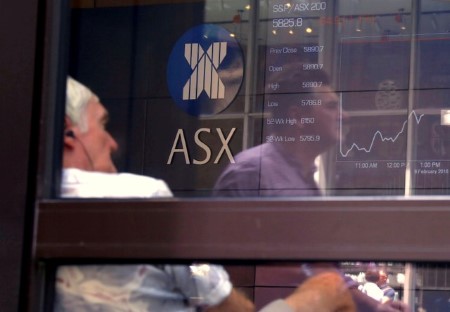




Policy Rate Updates: Double cut finale
 DOWNLOAD
DOWNLOAD

Monthly Economic Update: One for the road
 DOWNLOAD
DOWNLOAD

Inflation Update: Still low, still slow
 DOWNLOAD
DOWNLOAD


Asian shares join global rally on softer-than-expected US inflation

BEIJING/HONG KONG, Aug 11 (Reuters) – Asian shares tracked Wall Street higher on Thursday after a softer-than-expected US inflation report encouraged bets of less aggressive rate hikes from the Federal Reserve, while the dollar remained bruised after its biggest plunge in five months.
US consumer prices were unchanged in July compared with June, when they rose a monthly 1.3%. The July result was lower than expectations due to a sharp drop in the cost of petrol, causing markets to reposition on hopes that inflation was peaking.
MSCI’s broadest index of Asia-Pacific shares outside Japan rose 1.0% in early Asia trade, driven by a 1.2% jump in resources-heavy Australia, a 1.4% gain in South Korea .KS11 and a 1.2% advance in Hong Kong.
Gains in Chinese shares were more subdued. Blue chips .CSI300 rose 0.5% as new COVID-19 lockdowns in more Chinese cities, including the eastern export hub of Yiwu, dented sentiment.
Both the S&P 500 futures and Nasdaq futures rose more than 0.3% on Wednesday. The S&P 500 rose more than 2% during the previous session while the Nasdaq Composite closed 20% above its recent closing low in June.
“Rising real yields, due to the Fed’s commitment to fighting inflation, have been an enormous problem for valuations in 2022, so any dovishness is seen as positive by the stock market, particularly for the highest valued companies,” said Oliver Blackbourn, multi-asset portfolio manager at Janus Henderson Investors.
“However, the potentially more dovish outlook undermined a key support for the US dollar.”
US Treasuries, which had pulled back from an earlier plunge in yields as traders reassessed the Fed’s rate path, were not trading in early Asia on Thursday due to a holiday in Japan.
Slowing US inflation may have opened the door for the Federal Reserve to temper the pace of coming interest rate hikes. Traders now price in a 50 basis point rate hike next month, compared with the 75 basis point increase that had been expected before the inflation report.
“For the FOMC, the July inflation report is a pleasing first step towards being able to claim victory over inflation. However, at least one or two more similar readings for inflation are necessary if they are to have confidence that the inflation emergency has passed,” said Elliot Clarke, senior economist at Westpac.
Indeed, policymakers left no doubt they would continue to tighten monetary policy until price pressures were fully broken.]
During Wednesday’s session, Chicago Fed President Charles Evans said core inflation was still “unacceptably” high, and that the Fed would need to continue to raise rates.
Minneapolis Federal Reserve Bank President Neel Kashkari said that while the inflation reading was “welcome” the Fed was “far, far away from declaring victory” and needed to raise rates much higher.
On Thursday, the dollar was little changed against its major peers after plunging 1% in the previous session, the most in five months. Commodity currencies rallied on improved risk appetite from hopes of a soft landing.
Oil prices fell in early Asian trade as traders shifted attention back to more supply of crude entering the market coupled with weaker demand. Brent crude futures fell 0.4% to USD 97.05 a barrel, while US West Texas Intermediate crude futures fell by a similar margin to USD 91.58.
Gold was slightly lower. Spot gold was traded at USD 1,790 per ounce, pulling away from a one-month high hit in the previous session.
(Reporting by Stella Qiu and Alun John; Editing by Bradley Perrett)
This article originally appeared on reuters.com





 By Reuters
By Reuters